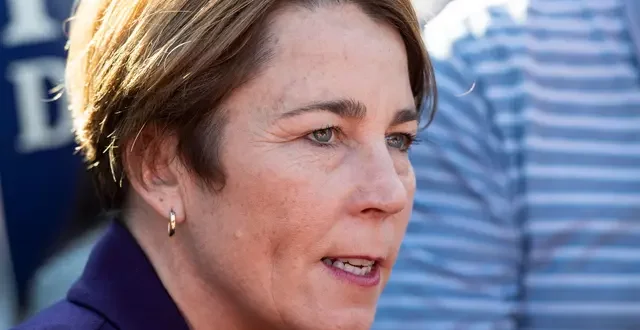Massachusetts is a state that voted in favor of the “Right to Shelter” open border policy, so it has to guarantee homeless families access to emergency shelter. However, the state has been experiencing a major immigrant problem that includes both legal and illegal immigrants.
As of Oct. 16, there are nearly 7,000 families with children as well as pregnant women in emergency shelter, including newly arrived immigrant families and longtime Massachusetts residents. “About half of the individuals in emergency shelter are children,” she added.
New Appointments
The Massachusetts governor has now outlined the state’s strategy to address the “next phase of the emergency shelter system.”
Gov. Healey announced the appointment of Lt. Gen. Leon Scott Rice as Emergency Assistance Director who will prioritize helping families who have been in long-term shelter to exit into more permanent housing options.
The governor said that Mr. Rice specializes in leading large-scale emergency management operations, and will be able to lead the state through this new phase with its emergency shelter system.
In this role, Mr. Rice will oversee management and coordination of the emergency shelter system, including leading the administration’s Incident Command Team, which was launched in May and includes representatives from multiple state agencies. He will be responsible for implementing this new phase of the emergency shelter system, coordinating directly with local, state, and federal officials and other key stakeholders, and updating the governor and lieutenant governor on daily developments, according to Gov. Healey’s office.

Mr. Rice has more than 40 years of experience with the United States Air Force and Air National Guard, retiring as a Lt. Gen. and disabled veteran in 2020.
He was the director of the Air National Guard from 2016-2020, managing a $11.5 billion budget and more than 100,000 personnel located in every U.S. state and territory. He also served as the Adjutant General (TAG) of the Massachusetts National Guard from 2012-2016, across two gubernatorial administrations. In this role, he led emergency response and post-disaster recovery efforts for Hurricane Sandy, Hurricane Irene, the Boston Marathon Bombing, as well as recovery from ice storms.
Rehousing, Rental Assistance
The announcement has also stated that families who have been in shelter long-term—over 15 months—will be prioritized to exit the shelter system, which is intended to be a short-term, emergency option, according to the government’s statement.
During this transition, the Healey administration will support with rehousing and rental assistance initiatives, such as HomeBASE, to support these transitions. The HomeBASE program helps eligible homeless families pay their first/last month’s rent and security deposits, moving expenses, stipends to help with ongoing housing costs, and other costs that can help families stabilize an existing housing situation or stably rehouse. The state has also urged the federal government, faith-based organizations, and other non-government organizations to help support the rapid increase in homeless families under the state’s “Right to Shelter” policy.
Entering the Job Market
The administration has also launched two new programs to get those in shelters into local jobs.
The first is a partnership with Commonwealth Corporation Foundation to develop a new job skills training program to connect businesses to individuals in shelter who are still waiting for their work authorization but looking to gain on-the-job training and skills development. This new program is beginning as a pilot starting with Salem but with an interest in building business partnerships in other communities over time, as per the Monday announcement.
Federal Engagement
The announcement from the governor’s office also said the administration will use every tool at its disposal to request more federal assistance to the federal problem.
Ongoing Immigration Crisis
Gov. Healey joins the bandwagon of impacted state leaders like Texas Gov. Greg Abbott and New York Gov. Kathy Hochul (D), who warned Congress this month that the “country’s border is too open right now,” while calling for limits to “who can come across the border.”
Gov. Hochul’s comment was made on the back of New York’s ongoing struggle with an unprecedented influx of illegal immigrants. As of Oct 2, the reported number of unscreened immigrants in New York over the past year surpassed 110,000, with around 60,000 living in the city’s shelter system, costing taxpayers billions of dollars per year.
 Speedinews Spreading Daily News With Speed
Speedinews Spreading Daily News With Speed




